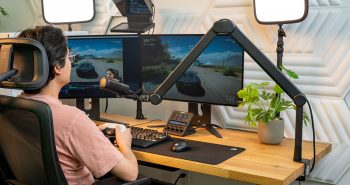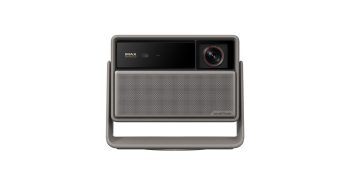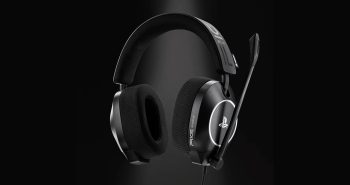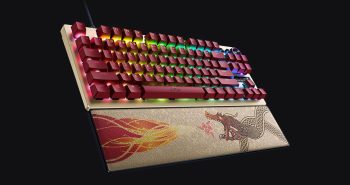I love gaming keyboards. Who would have though that keyboards would have become the industry they did? Before PC gaming became popular, they didn’t matter all that much and the design lacked innovation. Now, however, with gamers seeking every edge possible, companies have responded by creating keyboards specifically for their needs.
The Lycosa is Razer’s latest gaming keyboard following their Tarantula model. If the Tarantula were a Semi-Truck, the Lycosa would be a Corvette. Lycosa features a very low profile in comparison to most gaming keyboards. The outer casing is the same heavy black plastic (with a slick finish) as the Tarantula, although the attached wrist rest is a dull black. Unfortunately, the slick black plastic is prone to getting smudged with fingerprints but looks great when all polished up. Its keys are all rubberized. Yes, every single one and I didn’t think that would be all too important to me until I used them. The rubberized surface not only helps with grip but also comfort as the rubber helps absorb the shock on your fingers that is caused by typing. Razer has included a microphone and headset pass-through to the back of the keyboard as the did with the Tarantula. In addition, they have added one USB port pass-through as well. As an aside, the Tarantula had two USB ports on it.
Lycosa features a cool ‘TouchPanel’ media control area. It is a flat area with no raised buttons visible, and yet it can detect the slightest touch on its stenciled icons. This looks similar to the technology used in the Razer Mako 2.1 Desktop Audio System’s control pad.
Unlike the Tarantula, Lycosa is fully backlit, although the brightness of the backlighting could be a bit more intense and the stencils in the keys (which allow light through) could be a bit bigger. In the dark they seem a bit ‘muddled’ to get the maximum effect from. The light button in the TouchPanel has three settings. The first is off while the second setting lights up the WASD keys. The third lights up the whole keyboard. We did like the idea of the second setting, but in actual usage we found we just left it at the third setting mostly, so I don’t know how much use you will actually get out of that.
There are no specialized macro keys on the Lycosa like there are on the Tarantula, but via the ‘Lycosa Configurator’ software, any key on the Lycosa can have a macro assigned to it. This is extremely convenient as those dedicated macro keys on alot of gaming keyboards take a bit of getting use to. These keys are exactly where you expect them to be. The Lycosa can have up to 10 different profiles which can be switched between on the fly as well, which gives the keyboard a huge degree of key function flexibility.
Razer has engineered the Lycosa with its 1000Hz Ultra-polling technology which means there when a key is pressed, it takes just 1ms to reach the computer. Also, Razer has graced the Lycosa with the same ‘Anti-Ghosting’ feature as the Tarantula meaning the gamer can hold down up to 10 keys at a time without any interference between the keypress signals going to the computer. This essentially eliminates that awful ‘Sticky Keys’ window from popping up in Windows.
Using the Lycosa, we found the feeling of its key presses to be light, almost like a laptop keyboard but with a bit more ‘oomph’ (yes, that is the technical term). They produce a very nice tapping noise and, again, the rubberized keys feel very nice. We have used this model for everything from first-person shooters to real-time strategy games and, of course, general desktop app usage such as Microsoft Word. We haven’t found an application for which we did NOT like the Lycosa in.
Conclusion: Razer’s Lycosa is an incredible gaming keyboard with great looks, feel, and handling that is sure to give you the extra edge you need while in a tournament or just writing a report for school. It is well worth its $79 dollar price point.
*Note: Comparison image of Lycosa and Tarantula from ExtremeTech




